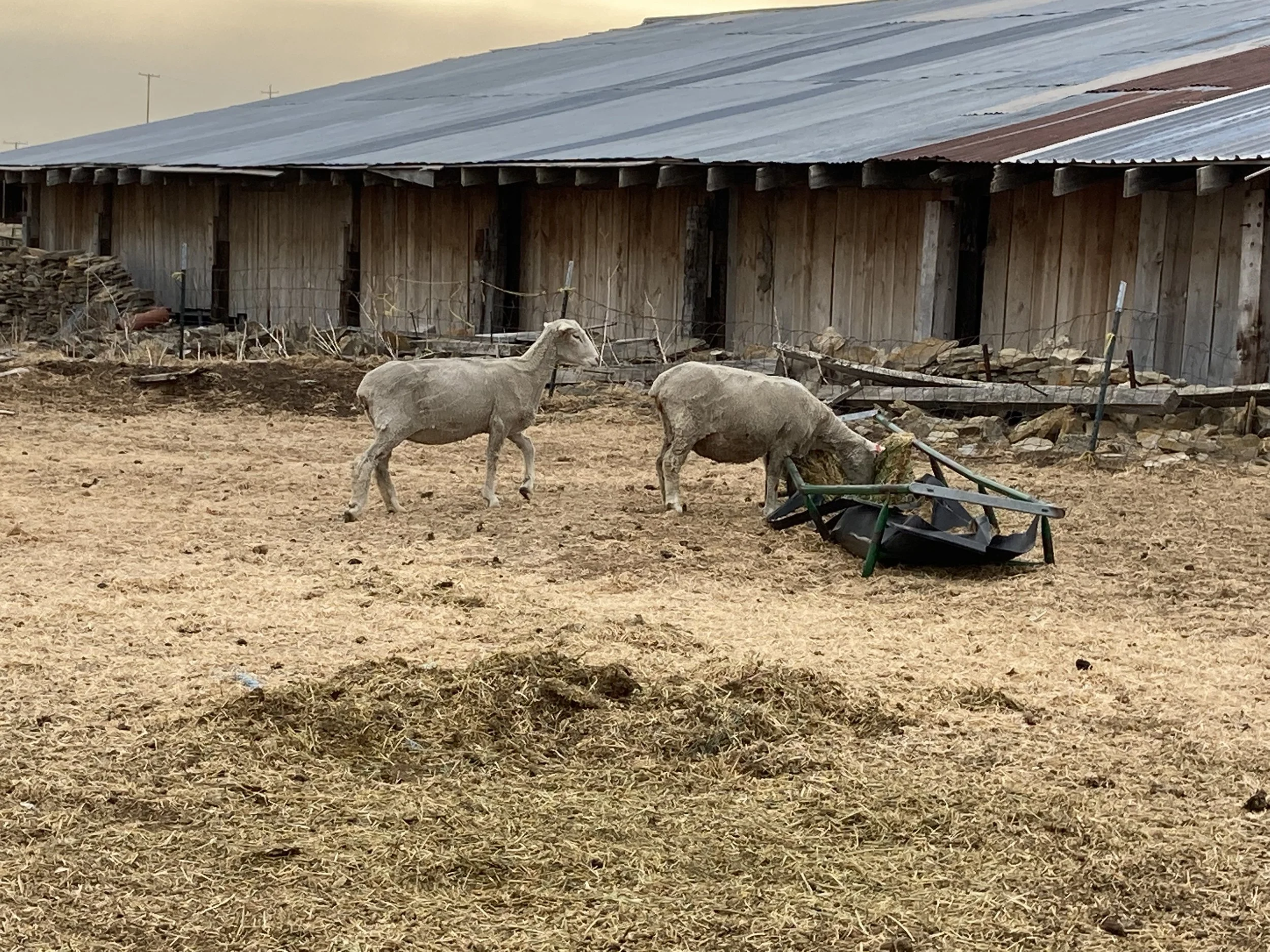Wrecks at the Beginning
“Don’t worry,” I said to my apprentice, Hannah, “The wrecks always happen at the beginning.”
But Hannah was worried.
The night before, as she brought the sheep to the corral from the pasture, one ewe had lagged behind.
Hannah had coaxed it slowly, but the ewe had collapsed at the bottom of the hill, hind legs stretched behind her and crossed.
Like every good employer, I was running errands in town while Hannah took care of the evening chores.
Hannah called to describe the situation.
“I tried to lift her up, but she couldn’t stand,” she reported.
It sounded like poisoning to me, probably Death Camas.
Death camas is a part of the onion family so its young slender shoots could easily be mistaken for grass just beginning to sprout by a frenzied foraging ewe.
Death camas kills by paralyzing muscles.
It doesn’t take much.
A lamb can’t tolerate even a single bite.
One June, at the beginning of summer, we had a huge ram that apparently preferred savory flavors to sweet.
My husband, Steve, and I loaded the immobile ram into a trailer and got him to the barn. We fed and watered him for three days before we decided he was suffering a fate worse than death.
Lambs learn which plants to graze by watching their mothers.
Apparently, this ram had not listened to his mother when he was a lamb.
I could talk all day about the dangers of not listening to our mothers, but I doubt my kids would listen.
By the time I got home, Hannah had finished the chores and the ewe had joined the flock in the corral.
Hannah and I strolled through the pen, but the ewe had disappeared into the mass of white wool.
Hannah was afraid I didn’t believe her story.
I did.
The next morning, we checked again.
The ewe still used a sheep’s best defense strategy to huddle in the mass of bodies, ready to find breakfast in the pasture.
By evening, we spotted Old Sicky when she collapsed again at the bottom of the same hill.
We let her rest, suspecting she would regain some strength and attempt to join the safety of the flock.
For the next hour, we moved her slowly toward a hospital pen.
Finally, she became so stressed and exhausted that we left her near to the sheep corral with hay and water for the night.
By morning, she was standing near the hospital pen, shaking with fear.
I guided her to the pen and then coaxed another ewe to join her so Old Sicky would calm down with a friend.
I still think she swallowed a bite of Death Camas, but maybe her lambs are pressing on the nerves of her hind legs.
Either way, all I can do is feed her and hope she heals.
The rest of the flock reminded me that this is the beginning of the season to pay attention.
Lambing is about to begin and the ewes look like babies might fall out of them at any minute.
When I brought the sheep from the pasture the next evening, I found the carcass of one ewe that had been stripped clean by coyotes.
The other day, we stitched up a ewe with a rectal prolapse.
Another ewe is limping with the extra weight of her growing belly.
But Hannah doesn’t know that the wrecks always happen at the beginning.
Apparently, my words did not comfort her.
Her voice rose as she asked “the beginning of what?”
I meant wrecks always happen at the beginning of lambing, but I amended my answer: The beginning of whatever caused the wreck.
After all, springtime is all about new beginnings.
Let the wrecks commence!
